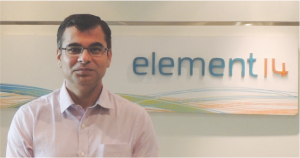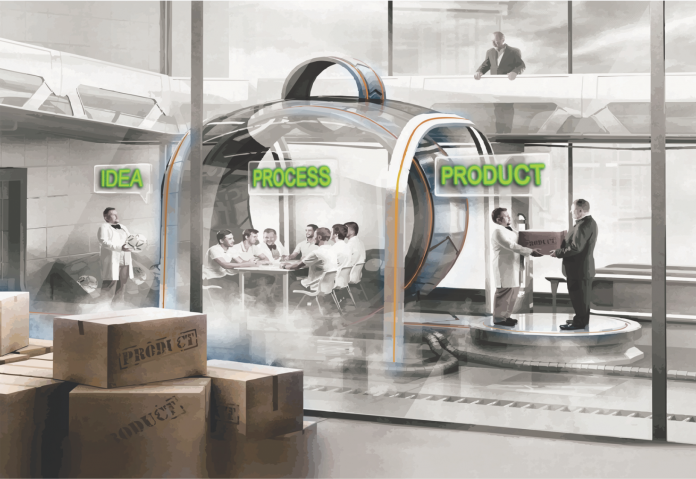There are often important constraints for the electronics engineer designing a wearable device such as power consumption, weight and size, but for most engineers one of the critical design parameters in creating wearable electronics will be, time to market. How quickly can the engineer move from concept to a useable product?
Find the useful insights on how engineers can dramatically reduce the time to market.
Quicker sensor design
Taking raw data from a sensor and turning it into meaningful information for the application is not always an easy task. The time needed to research and develop the algorithms to linearize, adjust for offsets and calibrate each individual sensor could take many weeks of development time. However, there are ways to greatly speed up the process. For example, Microchip Technology Inc. makes a motion co-processor device, the Microchip SSC7150. This device makes implementing motion based embedded applications very easy. It speeds time to market without the need for extensive sensor expertise. The device supports 9-Axis sensor fusion inputs – 3D accelerometers, 3D Gyroscope and 3D magnetometer. The collecting and processing of the information is offloaded from the host application microcontroller (MCU). It is available in a small 6mm × 6mm QFN package, and connects to the host MCU through an I²C connection. The host MCU can read accurate and already processed position and orientation information directly from the device, enabling far faster application development.
Quicker MCU design
After the sensors, the next step in the development of a wearable application is the selection of a MCU and developing its firmware. The MCU is used to control the application; read inputs, drive outputs and communicate between the various systems blocks. Software development is the most time consuming and complex part of the design process in embedded applications. In most cases the engineer will be programming in C. In addition, they will be developing drivers for the peripherals and will be integrating the various peripherals together through complex interrupt routines. Finally, they will be developing higher level application functions. Higher performance is usually achieved through more software running faster. There is an iterative process of software development, testing and debugging which takes time and effort to get right.
To address these concerns, Microchip has developed a large number of 8-bit and 16-bit MCUs based on the idea of Core Independent Peripherals (CIP). This allows simpler devices to be used in a far wider range of applications than before. A typical device will have a large number of these intelligent, interconnected CIPs that combine to perform functions autonomously, without the core. Because these functions are deterministically and reliably performed in hardware instead of software, CIPs enable system performance that is far beyond typical 8-bit MCUs. This simplifies the design process, and reduces the software development and associated testing and debugging time. CIPs eliminate a lot of the verification of functionality in complex control systems.
Quicker wireless development
Most wearable applications have a wireless connection. Some medical or other logging applications may store data until they can download the collected information via, for example, USB. But in general, the application is connected wirelessly. There are options such as LoRa for long range wireless communications. However, in many more cases the wearable technology will connect to a personal area network through a smart phone. In these applications Bluetooth wireless technology is the most common choice for a wireless connection.
Bluetooth wireless technology gives the designer of the wearable product the ability to use the billions of smart phones enabled with Bluetooth Smart Ready as the host for their product. With Bluetooth low energy, or Bluetooth Smart, the application can connect to an Apple iPhone (iPhone 4S or later) without the need for hardware authentication, making it easier and faster to get a design to market than using Bluetooth Classic, and opens the possibility of using the iBeacon protocol for the application.
As with the sensors, a module can greatly speed the addition of Bluetooth wireless technology to a design. Using the right module means that RF certification, antenna design and stack development are already done, and the engineer doesn’t need to spend time and effort on these aspects of a design.
Quicker Integration to the Cloud
Most wearable applications need to connect to the cloud. This is not a trivial task. To successfully do so requires bridging the gap between embedded designers and IT Professionals.
These two groups work in completely different worlds. Embedded designers are concerned about bits and bytes whereas IT professionals are concerned with Gigabits and Terabytes. Similar differences exist in other aspects of cloud connected embedded systems.
How can embedded engineers get a cloud enabled application running?
There are many aspects of a design to consider including servers, storage and security. Fortunately, there are also now many services which can ease and speed up the development of cloud based solutions. One of these is Amazon Web Services (AWS), with its Elastic Compute Cloud (EC2) and more recently introduced AWS IoT platform. The EC2 service allows a user to obtain and configure any amount of server resources, in multiple different configurations to suit the application. AWS IoT is a platform that lets connected devices easily and securely interact with cloud applications and other devices. AWS IoT can support billions of devices and trillions of messages, and can process and route those messages to AWS endpoints and to other devices reliably and securely. With this a designer can build IoT applications that gather, process, analyze and act on data generated by connected devices, without having to manage any infrastructure.
In summary, building a wearable application covers many complex development areas, but as can be seen there are modules, tools and an ecosystem which can really speed the development of a wearable application. In wearable applications the electronics is just the platform on which a more complex system is built, and getting that platform up and running quickly will be the key to a successful design.
To help speed up your design process, explore a huge selection of hardware development tools and software products at www.element14.com/designcenter, where you can search by part number, keywords, or using the dynamic filters; all products are supported with the technical resources you will need.









